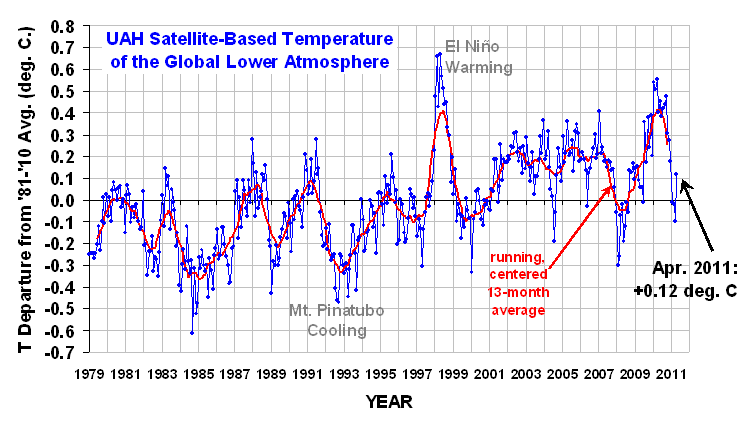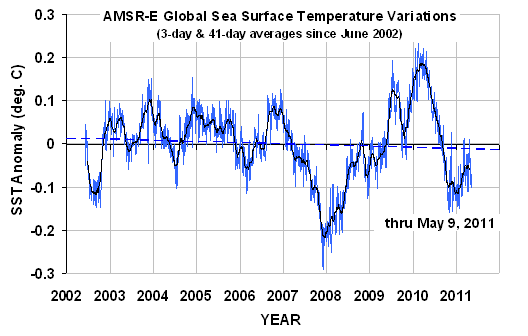YR MON GLOBAL NH SH TROPICS
2010 01 0.542 0.675 0.410 0.635
2010 02 0.510 0.553 0.466 0.759
2010 03 0.554 0.665 0.443 0.721
2010 04 0.400 0.606 0.193 0.633
2010 05 0.454 0.642 0.265 0.706
2010 06 0.385 0.482 0.287 0.485
2010 07 0.419 0.558 0.280 0.370
2010 08 0.441 0.579 0.304 0.321
2010 09 0.477 0.410 0.545 0.237
2010 10 0.306 0.257 0.356 0.106
2010 11 0.273 0.372 0.173 -0.117
2010 12 0.181 0.217 0.145 -0.222
2011 01 -0.010 -0.055 0.036 -0.372
2011 02 -0.020 -0.042 0.002 -0.348
2011 03 -0.101 -0.073 -0.128 -0.342
2011 04 0.120 0.199 0.042 -0.229
NEW! Monthly UAH temperature reports and global images.
La Nina Fades
The global average lower tropospheric temperature anomaly for April 2011 jumped up to +0.12 deg. C, further evidence that La Nina is fading.
I have also updated the global sea surface temperature anomaly from AMSR-E through yesterday, May 9 (note that the base period is different, so the zero line is different than for the lower tropospheric temperature plot above):
 |

 Home/Blog
Home/Blog





